Some cities are looking outside traditional yellow and white pavement markings. They're experimenting with an unconventional color palette to guide people safely.
Most of us are familiar with the solid and dotted-white or yellow lines on highways and roads everywhere. But what about green, red, orange or even purple markings? By using unconventional colors, cities are creating new, innovative ways to help manage traffic.
Let’s take a look at ways cities are using these unconventional colors on roadways.
Disclaimer: The applications in this article are either experimental or have interim FHWA approval. If you are interested in potentially using any of these applications, check with us at SEH or your state Department of Transportation for guidance and direction first.
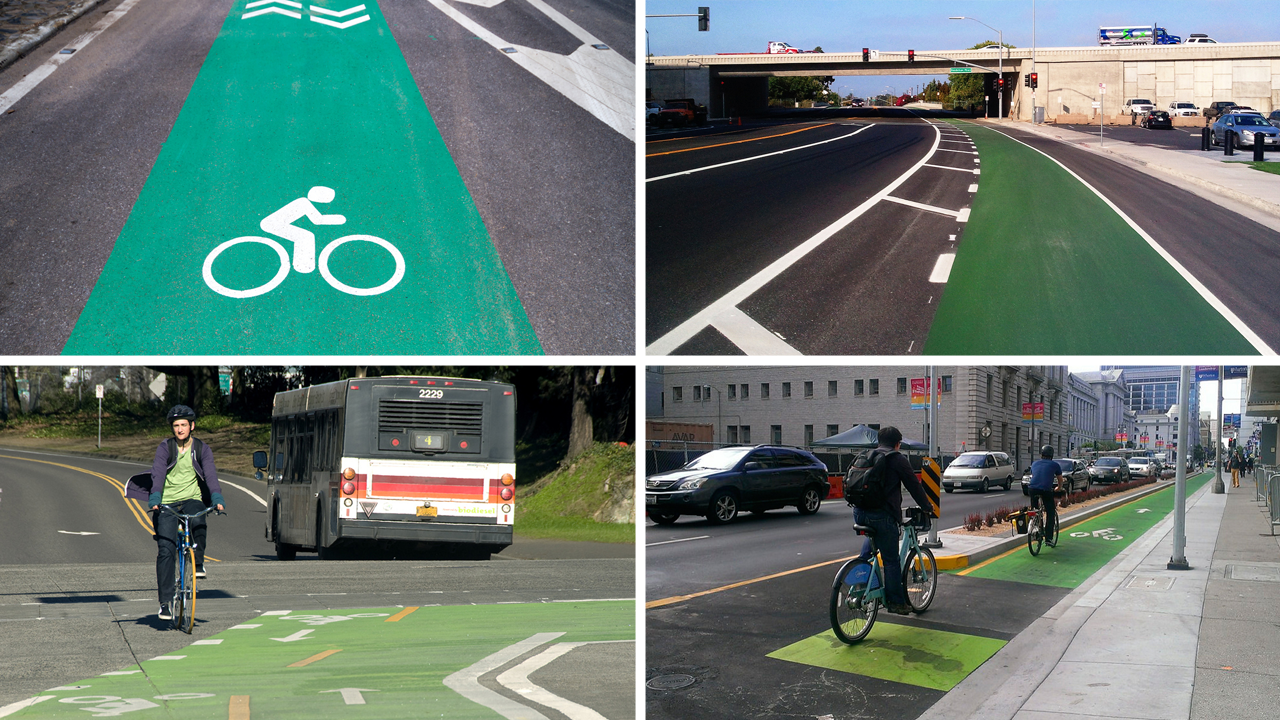
Green for bikes
What’s going on: Green pavement markings within a bicycle lane or through an intersection help to define the space for bicyclists while increasing awareness of the bike facility and conflict areas between modes. Green markings have been used either as a corridor treatment along the length of a bike lane or protected bikeway, or as a spot treatment (such as a bike box or two-stage turn box), in a conflict area or in conjunction with intersection crossing markings.
Who benefits: Cyclists are the primary beneficiary of these markings, which provide an extra visual cue alerting drivers and pedestrians to both the presence of a bike facility and to possible conflict areas at intersections.
What it means: Green was chosen for bike markings to avoid confusion with other standard pavement marking colors. The primary purpose of these markings is to alert all other roadway users to the presence of a bicycle facility and a potential conflict and emphasize vehicle priority.
Where it’s being used: The use of green pavement marking for bicycle facilities has been granted interim approval from the FHWA in more than 100 jurisdictions nationwide, including 29 state departments of transportation.
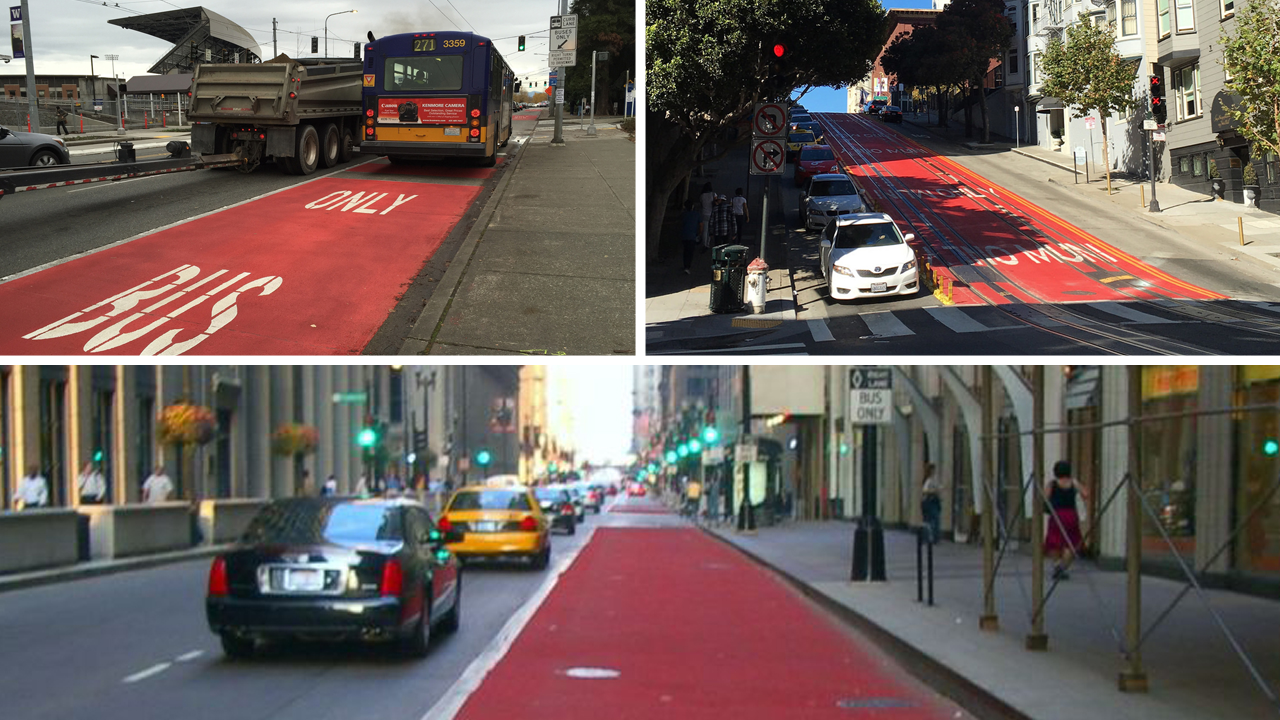
Red for buses
What’s going on: Red bus lanes tell drivers to obey the rules of the bus lane. They are intended to reduce illegal bus lane usage, especially parking.
Who benefits: Transit operators and users both benefit from more reliable and consistent service.
What it means: Unless you’re a bus driver, it means Keep Out!
Where it is used: Baltimore, New York City, San Francisco and Seattle have installed these lanes.
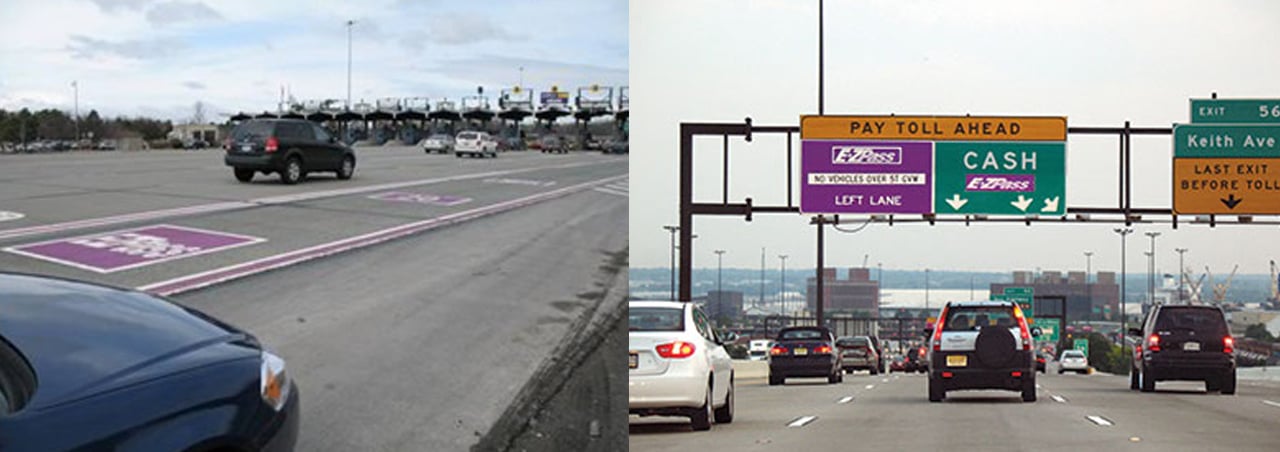
Purple for toll-lane markings
What’s going on: Purple is the color of choice for toll lane signing. The FHWA allows purple pavement markings to be used in addition to the standard white and yellows found in toll lanes.
Who benefits: The markings benefit confused drivers and those without electronic toll collection (i.e., transponder) technology.
What it means: Purple lines may supplement the white and yellow edge lines of electronic toll collection (ETC) only lanes to help guide drivers to the correct lane(s).
Where is it used: These markings are not common, but the Virginia DOT has experimented with them in the suburban Washington DC area.
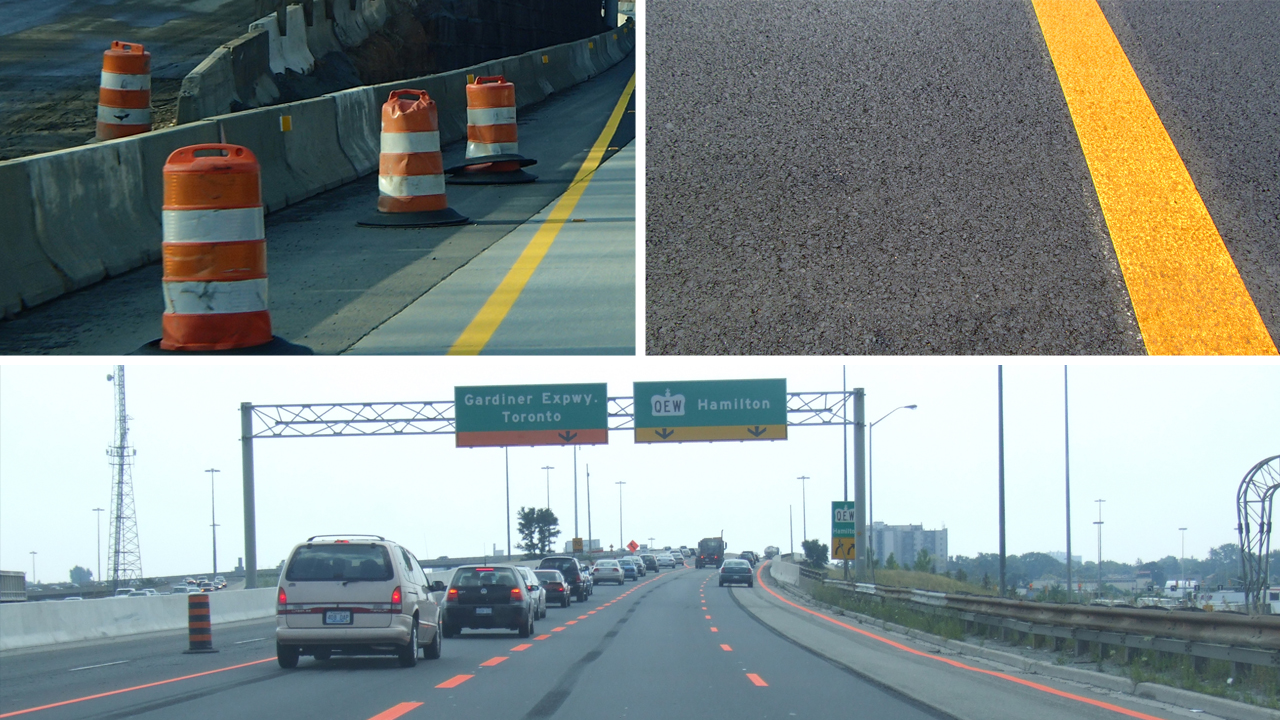
Orange for work zones
What’s going on: Orange striping and pavement messages are placed over existing roadway striping during construction on freeways and other multi-lane high speed roadways.
Who benefits: Drivers in work zones, especially in low lighting or winter conditions benefit the most. The orange markings help to remove some of the ambiguity regarding what the correct position of temporary lanes is.
What it means: Just like orange work zone signs, orange pavement markings are intended to alert drivers that they are approaching, or are in, a work zone and that roadway conditions may have changed.
Where is it used: The Wisconsin DOT has experimented with orange markings as part of the Zoo Interchange reconstruction. This project is in a high traffic area in Milwaukee. The markings helped drivers better navigate and contributed to work zone safety. Orange markings are commonly used in Ontario, Canada, and Switzerland, and have been used occasionally in Germany and New Zealand.
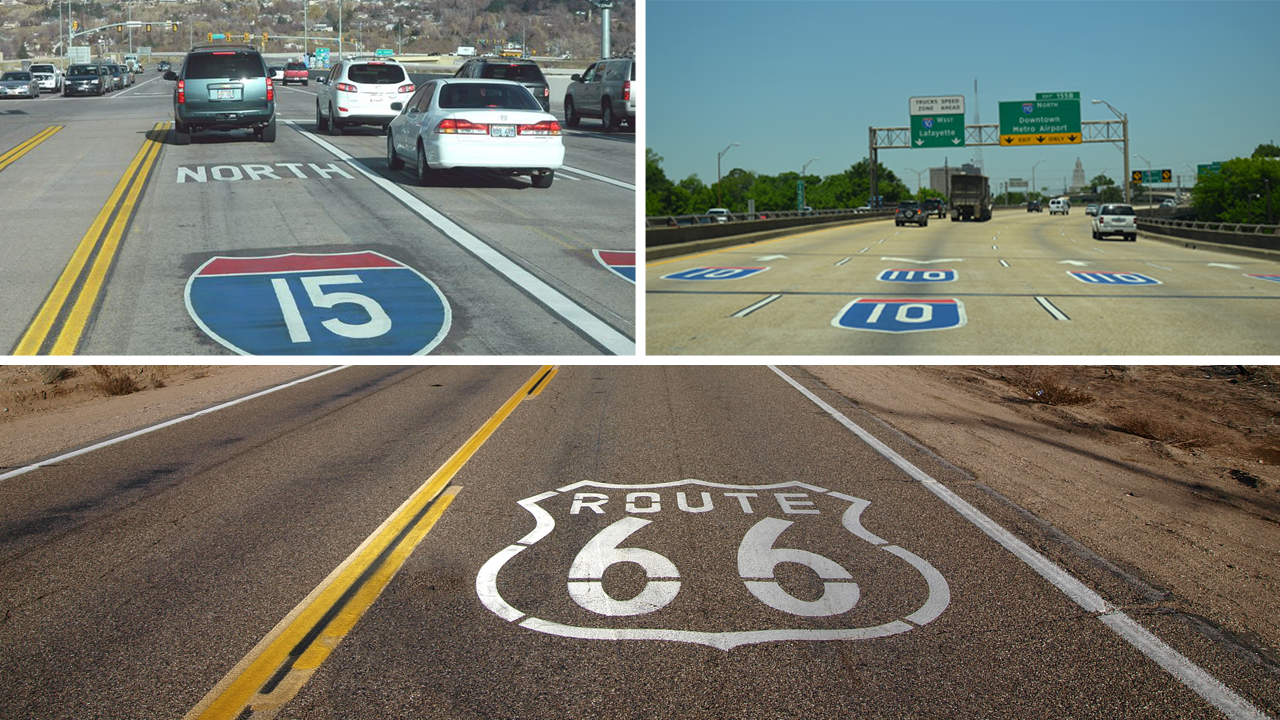
Colorful shields for routes
What’s going on: Large multi-color route symbols are placed on the pavement. These can be painted markings or thermoplastic decals applied to the roadway.
Who benefits: The traveling public benefits from this marking, which, according to research, can help improve overall freeway operations and motorist understanding.
What it means: It’s pretty straight-forward. A route shield is placed in the lane to keep drivers on their route. For example, if, on a five-lane freeway, the three leftmost lanes continue to I-94 and the two rightmost lanes exit to US 61, then I-94 route shields would be placed in each of the three left lanes, and US 61 route shields would be placed in the two right lanes.
Where is it used: Colorado, Florida, Maine, Maryland, New Mexico, New York, Texas and Utah are all states that have installed these markings.
Pavement markings: more than just white and yellow lines
They guide us through corridors and across city streets, but the ubiquitous yellow and white lines are only just the beginning. Cities are experimenting with new, innovative ways to manage traffic. Purple, green and red paint markings are beginning to show up in cities across the U.S. These new color techniques offer drivers and pedestrians unmistakable references as to where they should, or shouldn’t be.


